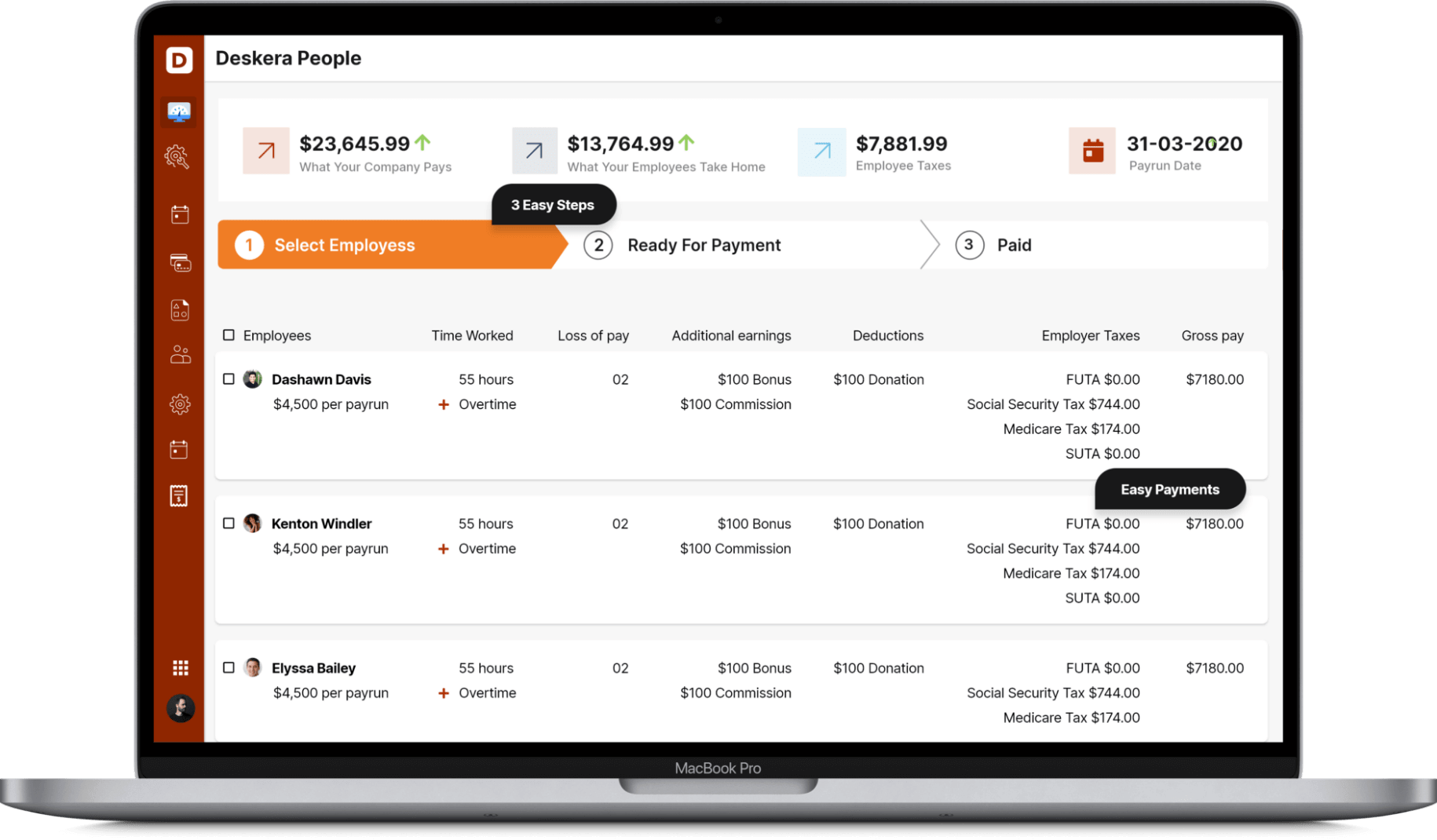86% of the workforce revealed having a positive effect on their well being after the introduction of EAPs. An Employee Assistance Program (EAP) is a work-based, voluntary program that offers free and confidential assessments, referrals, short-term counseling, and follow-up services to workers who have personal and also business-related issues.

Hence, this article gives a brief understanding of the Employee Assistance Program. Following are the concepts covered:
- Employee Assistance Program (EAP)
- Type of concerns included in EAP
- EAP delivery models
- Implementation of Employee Assistance Programs
- Benefits of Employee Assistance Programs
- Importance of EAPs
- Who offers this service?
- How to choose an International EAP?
- Cost of an employee assistance program
- Business application of EAP
- Selection of Vendor for EAP
- Important requirements for an EAP
- Types of EAP Referrals
- Key takeaways
Employee Assistance Program (EAP)
EAPs have their origins in the late 1930s and were framed out of projects that managed occupational alcoholism. While drinking at work was the norm, individuals started to see the impacts it had on work performance and productivity.
An Employee Assistance Program (EAP) is to help workers at all levels and in most cases their family members' dependents, who have personal concerns that influence their own well-being and/or work performance. Not all businesses offer EAPs. Check with your manager to check whether they do. It is a counseling and consulting program where workers set forward the issues they are facing.
EAPs have helped workers with issues like liquor or substance abuse; be that as it may, most now cover an expansive scope of issues, for example, child or elder care, relationship challenges, monetary or legal issues, well being matters, and traumatic accidents like workplace violence.
EAPs by and large offer free and confidential assessments, short-term counseling, referrals, and follow-up services for workers. EAP counselors may likewise work in a consultative job with chiefs and managers to address worker and organizational challenges and needs.
Numerous corporations, scholarly establishments, or government agencies are dynamic in helping organizations prevent and adapt to workplace violence, injury, and other emergency response situations.
There is an assortment of help programs presented for representatives. Despite the fact that EAPs are essentially focused on business-related issues, there are a variety of programs that can help with issues outside of the working environment. EAPs have grown in popularity throughout the long term, and are more alluring financially and socially.
Type of concerns included in EAP
- Critical and traumatic incidents
- Marital and family
- Problematic substance use
- Interpersonal relations
- Work-related stress
- Personal and emotional
- Any other concerns affecting or which could affect personal well-being and/or work performance
- Stress and burn-out
- Help with substance abuse, child and eldercare
- Conflict
- Mental health issues
- Grief
EAP delivery models
Employee assistance programs are generally presented by an organization to workers at almost no expense. As a rule, managers work with outer EAP suppliers to offer a scope of services, yet that is not generally the situation.
Critically, the range of offerings being remembered for the umbrella of EAPs is developing and evolving. A few organizations might in any case consider an EAP simply clinical care services, smoking end, and weight loss plans. Others incorporate everything from the rec center to financial counselors to the on-site food service.
Managers have various options while laying out an EAP program, from keeping it totally in-house to rethinking each part of the service. These are the most well-known EAP delivery models:
Consortia
Small businesses join together to contract for EAP services, bringing down the expense per worker.
Peer assistance programs
Supported by businesses or unions, peer help programs (PAPs) train peers to work with disturbed workers to address substance abuse and different issues within predetermined rules and limits. Whenever EAP programs are in-house, organizations straightforwardly use service providers.
Google has a cafeteria, fitness center, daycare, and other worker services on its premises. This is presented alongside in-house masseuses in a few areas. As a rising number of workers leave occupations for mental health reasons, a few organizations even have an on-location advisor.
In-house programs are generally costly, considering the framework expected to scale the services. This sort of model is for the most part appropriate for huge organizations with adequate financing to carry out the program.
Peer support is a kind of in-house EAP. A trained worker can fill in as a sort of peer advisor. They can assist with exploring circumstances they've survived, like substance misuse or stopping tobacco. These connections can assist workers with recapturing control and diminish pressure.
There are workers who are working today who otherwise would have gone out on sick leave, and we had the option to forestall that.
Fixed-fee contracts
Businesses contract for different administrations, for example, referrals, counseling, and supervisory training with fees in view of the number of workers, no matter what their genuine EAP use. In a contract model, businesses join forces with an outside, third-party organization or vendor.
This could be an educational institution, a substance recovery organization, or a psychological wellness training platform. The outsider will offer administrations for a set charge, paying little mind to worker use.
Organizations can change the EAP advantages to the organization's needs and budget. In emotional well-being services, managers can cover a particular number of therapy meetings every year.
Or on the other hand, say the EAP upholds the educational cost for a university course that supplements the worker's vocation development. All things considered, the organization can pay for it up-front or repay the educational cost sum later. Assuming the business is partnered with an educational foundation, workers can get a decrease in the educational cost sum.
Management-sponsored EAPs
These are in-house programs, and the EAP staff is straightforwardly employed by the organization. Large organizations frequently offer this type of EAP.
Member§ assistance programs. Given by unions, member assistance programs (MAPs) offer services going from prevention and problem identification to referral to reference and counseling activities for workers and their relatives.
Fee-for-service contracts
Businesses contract straightforwardly with the EAP supplier, paying just when the assistance is utilized. In this sort of EAP model, organizations partner together with service providers on a per-use basis. This implies that the business just pays for the services utilized by workers.
An organization could get a diminished rate for its workers by joining forces with a mental health provider. All things considered, workers approach the help, however, the organization just pays for the number of meetings booked by workers. The billing system is straightforward, accepting the EAP can be handily estimated in a quantifiable manner.
The liability, ownership, responsibility actually falls on the specialist organization. The business' essential goal is simply to give guiding services or backing to workers. For the most part, private companies take on this or a similar model.
Mixed-model programs
These are utilized by managers and unions with various worksites that have various requirements and resources. There's no need to pick between in-house and outsourced EAP services. Use a blend of the two sorts to suit your organization's novel necessities.
For instance, your organization might not have the foundation to build an on-site fitness center. You could join forces with a local fitness center instead. Assuming you have the resources, you could use a specialist or launch a peer support program in-house.
A combination program offers custom-made types of services that address their workers' essential worries. The arrangement can focus on the effect while capitalizing on the organization's allocated budget.
Implementation of Employee Assistance Programs
Employee Assistance Programs are very complicated in the event that you don't have the root information on how it functions. Also, execution is considerably harder if there is an absence of an efficient methodology.
We will discuss a few points on how an organization can introduce an EAP.
1. Plan the Structure
A firm and solid groundwork of any structure is their stronghold, and in exactly the same way, an appropriate design for your EAP will end up being crucial.
Prior to setting to carry out an EAP, plan a working and straightforward plan of how the program should be. Attempt to define targets and objectives you need to accomplish with EAPs in the organization.
Whenever everything is set with an unmistakable sight of the goals, you will find it a lot more straightforward to onboard EAPs with next to no issue. What's more, the organization will actually want to expand the program's viability by carrying vital changes with a planned structure.
Moreover, the management will have careful thought regarding how the program will function when they stay with the brief and decisive action plan.
2. Mind the Budget
Employee Assistance Programs are accessible for any business size. Be it huge organizations or small companies. Yet, the significant distinction comes when the financial plan plays its role in taking on the program.
Big corporations could go for rewarding EAPs, however, that choice gets reduced for small businesses. This is the reason adopting EAPs under the budget is extremely pivotal. You should give all the essential help to your workers without consuming a big hole in the yearly financial plan.
3. Select the Vendor
Perhaps the main component while carrying out an EAP is choosing the right vendor to suit your organization. There are many vendors on the lookout, yet which one will fit best for the association relies upon what you want.
While picking the vendor, you can pay special attention to specific boundaries like-
- Accessibility of services 24x7.
- Years of service, experience, and certifiable testimonials.
- Geographical availability.
- The cost of the vendor is acceptable for you.
- Scope of services covered by the EAP.
- Great customer service and fulfillment levels.
The boundaries can contrast as indicated by hierarchical necessities. In any case, do shortlist every one of the necessities with the goal that the EAP vendor covers every one of your areas of interest.
4. Adaptability
The adaptability of a program makes them more effective and practical over the long haul.
What does adaptability imply while executing an EAP? All things considered, the response is basic. You can't expect that a program should run with the arrangements you began from. Modernization and changes will be made to make the program more viable. Presently a program that utilizes outdated services will demonstrate to be a liability.
Be that as it may, assuming your EAP permits adaptability, you can roll out periodic changes and incorporate services with the evolving pattern. Making an EAP program much more powerful and supportive to the organization over the long haul.
5. Introduction and workers' understanding of the Program
The execution of EAP won't be finished assuming that you pass up the most common way of introducing it with your workers. When workers get the system of what an EAP comprises, causes them to comprehend the advantages it can bring to their lives.
Make a point to direct a FAQ session where workers can bring up issues and questions about EAP. Have a specialist board prepared to address any inquiries with the goal that workers can comprehend EAPs and take full use of them for their benefit.
The more advantages they will get, the better their satisfaction levels will assist the organization's main concern with upgraded engagement and productivity.
Benefits of Employee Assistance Programs
A few examinations show that offering EAPs might bring about different advantages for businesses, including lower medical expenses, diminished turnover and absenteeism, and higher worker productivity. Critics of these examinations question the logical legitimacy of their discoveries, noting small samples, absence of trial control gatherings, and absence of experimental control groups.
Defenders, nonetheless, contend that the consistency of positive discoveries across studies in various help areas indicate at minimum some beneficial outcome of projects, regardless of whether the best parts of such projects have not been determined. EAPs may likewise offer different types of assistance to managers, for example, supervisory discussions, support to disturbed workgroups, education and training programs, and critical incident services.
Positive workplace
A workspace where workers are focused is certifiably not a sound climate. Productivity drops, and workers will generally leave organizations with such conditions, which is rarely a decent sign.
Yet, workers in a less upsetting workplace are more loyal and have better concentration. There are many variables to this. One such component is the execution of Employee Assistance Programs.
These projects help troubled employees by offering help with the issues that they are facing. This results in a change in mood and a reduction in stress levels along these lines having a good effect.
Fast Response: The first counseling session happens within a couple of days, and an emergency is managed right away.
Rising Productivity
Distraction from individual or professional issues is the primary productivity killer of your workers. They become less motivated and innovative at work which obstructs the flow of work. This can be expensive for managers on the grounds that albeit the workers are genuinely present, they can't play out their assignments effectively.
Numerous organizations use EAPs to resolve these issues. A 2004 Journal of Employee Assistance research report proposes that after EAP intervention, average productivity losses fell significantly. Still, to expand the efficiency of workers, an association can pick EAPs. These projects assist a worker with dealing with every one of the troubles they face.
Be it the difficulties at work, monetary assistance, or clashes inside the work area. Hence, lessening superfluous interruptions and assisting them with focusing in addition on their positions. With EAPs showing workers choices for their circumstances and giving resources to assist with settling these issues, workers can feel esteemed and get a lift to their morale.
Since workers can now appear for and focus on work, businesses don't have to make up for lost production, compensate overtime rates to workers who should make up the lost creation, or pay preparing costs for newcomers. In this way, EAPs promote employee longevity and decrease turnover rates, as indicated by contextual investigations referred to by the National Business Group on Health.
Direct Access
Employees call the psychologist's office directly.
Decreased Absenteeism
The prosperity of workers should generally be a prime focus of organizations. In any case, assuming that is something an organization is missing out on, your workers will feel less valued and attempt to skip work. No organization needs a circumstance that will make future issues.
To decrease absenteeism, organizations can introduce Employee Assistance Programs where workers can raise their concerns. This will assist with automating the process and assist the organization with pinpointing each worker's anxiety. In this manner, helping them out in each step at whatever point required and keeping up with their well being.
Professional
Counselors are normally qualified therapists, and are specialists in human behavior.
Less turnover
Turnover has generally represented a critical danger to organizations in the corporate world. It costs the organization a lot of cash, affecting the income and market presence over the long haul.
Heeding onto the workers' concerns can diminish turnover. This is the place where EAPs come into a spot to make things simpler for associations. It assists with bringing up the issues looked at by organizations, however, it additionally gives the fundamental solutions. This makes the job more straightforward for the two businesses and workers.
Subsequently, bringing about decreased turnovers as workers feel valued that the organization is doing whatever it takes to manage the issues.
Off-Site
Counseling happens at the therapist's office.
Direct Treatment
Referrals are made just when the patient requires another trained professional or long haul care.
Suitable Coverage
24 hours per day hot-line with workplaces in towns and urban cities in which employees are found
Decreased Workplace Violence
Workplace violence is the main issue for managers and employees the nation over. As per the U.S. Department of Labor, around 2 million U.S. workers are presented to workplace violence every year.
Workplace violence can be brought about by work environment stress, liquor or substance misuse, or domestic issues. With an end goal to limit the risk of work environment violence, businesses utilize EAPs. These projects can give consultation to workers under pressure and promote violence prevention resources.
Further develops Morale
You could have workers in your organization that performed well. In any case, there is a critical drop in their morale and nature of work. On the off chance that they are battling to lift their confidence and morale your workers may be facing a few critical obstacles in their day-to-day existence.
EAPs play a critical part in explaining the issues that your workers may be looking at in such conditions.
When you get a superior understanding of their issues with the assistance of EAPs, you will help them in settling them. This works on your workers' morale, however, it additionally expands their working abilities.
Lower Litigation Risks
Directors and managers can utilize EAP resources to distinguish and address their workers' performance issues and personal issues. This diminishes supervisory time for troubled workers and along these lines gives savings for the organization.
EAPs can possibly diminish the risk of expensive lawsuits by addressing workers' objections before they raise since counsels with EAP specialists provide supervisors with tools to oversee worker conflicts.
These resources and training meetings empower businesses to answer fittingly to workplace discrimination or harassment before workers look for legal action.
The provision of worker assistance has laid out business benefits, including expanded efficiency of workers, and a diminish in both presenteeism and non-attendance.
Workers normally approach an EAP hotline 24 hours every day, so there is no need to wait to seek assistance. In the event that a meeting with a medical professional or advisor is important, the worker can arrange to see one in only a couple of days.
Since the worker can call whenever they don't need to stress over calling from a working telephone. You may likewise have the option to limit the expense of your medical coverage plan, since workers can utilize the EAP to avoid pressure-related diseases, meaning fewer trips to the specialist.
Importance of EAPs
As indicated by the American Institute of Stress, 48% of individuals say pressure contrarily affects their personal and professional life. This costs managers $300 billion yearly in "stress-related healthcare and missed work"
Organizations worried by these numbers regularly add EAPs to their advantages bundle. These projects can assist with lessening pressure and, thusly, benefit the organization overall. Workers might feel more upheld simply having these offerings available.
EAPs support employee wellness
New types of EAPs don't simply assist workers with adapting to work environment stress. They're quickly advancing into holistic well-being programs.
By giving EAPs, organizations can uphold workers through critical life and career events. This gives significant resources to assist them with exploring stressors without allowing work to suffer. Instances of circumstances EAPs support include:
- Family circumstances, like separation, adoption help, or childcare.
- Social or expert connections are similar to compromise, organizing, family issues, and relationship building.
- Recovery from substance misuse and traumatic mishaps, similar to mishaps or the passing of a friend or family member.
- Mental well being backing to assist employees with adapting to pressure or psychological well-being issues.
- Professional development. EAPs frequently give education projects to build a variety of skills.
- Career transitions, be it a lateral switch or a promotion. Workers get the help they need to smoothly settle into the responsibilities of the new job.
- Travel to help workers rest and re-energize. Airbnb offers travel credit.
- Supporting wellness can assist workers with being more joyful and more satisfied at and away from work.
Well being increments workplace productivity and performance
At the point when workers are well, their performance moves along. A recent report by the Federal Occupational Health (FOH) observed organizations with EAPs saw:
-A 69.2% lessening in absenteeism
-A 22.8% improvement in "work presenteeism"
-A 10% lessening in "work environment distress"
At the point when workers are locked in working, they're more useful. Workers' engagement helps facilitate collaboration with co-workers and decrease burnout. The information above reiterates the positive effect EAPs have on worker job performance.
EAPs can work on the organization's bottom line
Putting resources into worker well-being can bring about more prominent returns for organizations over the long haul. Thus, EAPs, even with low use, by and large show positive ROI regardless of company size.
The 2020 Workplace Outcome Suite (WOS) Report viewed that as with realistic variations in EAP cost and workers pay yet different perspectives being equivalent - the ROI went from 3:1 for small size managers, 5:1 for medium-sized managers, and to 9:1 for large size businesses.
The study additionally revealed reserve funds of about $2,000 to $3,500 per worker through decreased work absenteeism and presenteeism. Presenteeism is when workers appear however to be occupied and incapable to perform well.
Likewise, assuming a worker is more joyful, organizations are bound to hold them long haul. Further developed worker retention results in diminished recruiting, onboarding, and training costs.
The EAP information just covers a part of the effect more broad-based investment in well-being can have on reality.
Supporting your workers is generally a vital part of building an influential organizational culture. Also, you can upgrade your efforts on the off chance that you can introduce EAPs in your organization. The principle elements of an ideal EAPs are as follows:
Accessibility: EAPs can be gotten online. These projects give an internet-based platform where workers can sign in and access different digital broadcasts, recordings, and interactive programs as per their requirements. These projects are accessible to workers 24x7 and their close relatives. The relatives should be qualified for the program. Workers can converse with specialists through texts, messages and get help at whatever point they need.
Confidential: One of the most fundamental components of these projects is keeping your workers anonymous. No individual will be able to penetrate any data about others which is generally a driving variable of any program.
Secure-Anonymity is what people want, and this program ensures that everybody stays anonymous. This expands the validity of the program, and workers are more determined towards utilizing such projects.
Who offers this service?
Most of the time, your manager will make this service accessible to you and your family at no direct expense for you. The services are frequently given by outer EAP suppliers, and you might get an appointment time and place outside your normal working hours and working environment for greater confidentiality.
The number of sessions allowed varies yet is generally something like three separate one-hour meetings. Many projects will stretch out the meetings up to 5-8 meetings for every individual each year.
How to choose an International EAP?
For the most part, buyers of worldwide EAP products fall into two camps-those that try to carry out a single, worldwide EAP model and those that deal with a series of regional or local vendors around the world.
In principle, a single vendor model for worldwide EAPs is ideal in its promise of wide geographical coverage, simplicity of communication, centralized account management, and standard data reporting. The inquiry is whether worldwide EAP sellers can deliver a universally scaled program that meets the intricate requirements of global businesses.
There is some discussion that a single vendor can oversee complex contractual and legal issues across worldwide lines and have solid information on local providers, work cultures, work cultures, and approaches to deal with psychological well-being care.
To counter those limitations, decentralized EAPs are coordinated around numerous local and regional agreements with those perceived as the best local providers; notwithstanding, employers inclining toward a single global provider claim this multi local approach is too cumbersome and challenging to make due.
Different contracts across numerous vendors leave space for conflicting and wasteful worldwide programming. A lack of communication and coordination of services when a worldwide reaction is required can make issues.
The debate reduces to information, resources, and the "form or purchases" situation that numerous businesses regularly experience. In the event that the business has the opportunity, financial plan, information, and volume of workers to basically develop its own worldwide organization, the decentralized model has benefits. For employers with more constraints on their resources, depending on a single, central vendor is likely the better way.
Whatever model a business decides for a worldwide EAP, making a business case for investing into it very well may be harder than for a domestic EAP. On the off chance that the business doesn't value, promote, or use its domestic EAP, leadership will unlikely back investment in a global one.
What's more, in certain societies, the North American idea of directing may not be natural or acknowledged, so local workplaces might be impervious to the possibility of EAP services.
Cost of an employee assistance program
The expense of implementing an EAP differs in view of different elements. These could incorporate the organization's size, the concurrence with the provider, and the sort of help you need to introduce. You can likewise choose whether to introduce a single initiative or a comprehensive program.
Due to this variability, research on EAPs will in general show various figures. EAPs cost somewhere in the range of $30-$50 per worker each year. A new report by the University of Maryland in Baltimore tracked down the expense for large organizations to purchase balanced EAP services from an outside vendor to be around $1.08 per worker every month.
The study additionally observed cost differences based on company size. A business with 2,000 + workers was paying around $0.96 PEPM, and a smaller employer was paying around $1.58 PEPM.
With regards to payment structure, organizations can come to an agreement with providers about estimating. As per a review by the University of Maryland in Baltimore, a portion of the pricing models for EAPS includes the accompanying:
- Value-based repayment is where service providers are paid in light of workers accomplishing pre-determined outcomes. An example of a goal includes a decrease in absenteeism or improvement in emotional well-being. HR can gauge the outcome, or workers could self-report their progress.
- Budgeted utilization where managers pay the provider in light of expected use or allocated budget Assuming the business has a proper spending plan for EAP, the fixed budget to offer services affordable, which might be less extensive.
- Bundled payments where the total cost of a fixed number of meetings is lower than the cost per meeting. Employers pay the merchant the bundled fee. Providers will offer this model to build a long-lasting work relationship with the organization and hold them as a client.
It's essential to know there's a great deal of adaptability with EAPs-track down the right supplier, and you can iron out the subtleties. Albeit a few associations might stress over the cost, the profit from speculation can be extensive.
Business application of EAP
Managers as a rule pay for EAPs, and their services are frequently accessible not exclusively to workers yet in addition to workers' close relatives or to anybody residing in workers' homes.
Managers have a vested interest in the capacity of workers to work at or near their maximum capacity. EAPs are important resources that can assist workers with adapting to issues influencing their capacity to arrive at that potential.
Marital and family problems, conflicts among co-workers and directors, depression, substance abuse, business-related pressure, legal and monetary issues, and child and senior care needs are only a portion of the worries influencing workers' well-being.
These interruptions might hurt productivity and drive up costs for organizations. The medical care framework can't constantly deal with these types of issues, particularly those, for example, needs for monetary advising or eldercare help-that are not well being-related. EAPs are financially savvy instruments to moderate these dangers.
EAPs can assist managers with diminishing absenteeism, workers' compensation claims, medical services expenses, mishaps, and complaints. Likewise, they can address wellbeing and security issues, further develop worker efficiency and engagement, and diminish costs connected with worker turnover. As indicated by the 2019 SHRM Employee Benefits research report, 79% of surveyed employers offered an EAP.
Selection of Vendor for EAP
While choosing an EAP service provider, a business needs to think about the accompanying factors:
- Service location. Will the EAP services are accessible on location, offsite, or both?
- Hours of service. Are services accessible to workers who work night shifts or uncommon hours?
- Scope of services: Does the vendor offer a full range of services, for example, stress management, elder care help, substance abuse programs, well being programs, and monetary guidance?
- Years of service, references, and current clients. Do different managers with similar workforce suggest the vendor?
- Capacity to offer types of§ assistance to workers in various areas. Would the provider be able to deal with clients who are not all in a similar geographic region?
- Referrals. Is the vendor ready to refer workers to outside resources when the workers need more or unexpected assistance in comparison to the EAP alone gives?
- Follow-up services. Is there a process for keeping tabs on clients' progress and ensuring they keep on getting the assistance they require?
- Credentials and training. Would the EAP provider be able to show that its proficient workers are prepared and that they hold appropriate and updated credentials?
Important requirements for an EAP
No matter what the vendor model, there is expansive agreement around basic EAP necessities. The Employee Assistance Professionals Association (EAPA) rules say EAPs must-have than not written strategies ensuring client classification, a sufficient number of prepared worker help experts, and formal methodology for following back to or observing individuals who utilize the EAP.
EAPA suggests that organizations embrace a written strategy characterizing the EAP's relationship to the organization and expressing the extension and restrictions of administrations.
The intent of a written policy statement is to give an unmistakable meaning of the EAP's capacity and to ensure that all parties comprehend the EAP and that the EAP is utilized reliably all through the organization. The policy statement ought not to be mistaken for working systems or contractual agreements.
Since operating procedures might be changed in light of emerging needs, they ought not to be consolidated into a policy report that might be hard to alter.
EPA's guidelines additionally incorporate the following:
- Training for the business organization's leaders, so those leaders figure out how to perceive issues and can mediate by referring workers to the EAP.
- Prepared professionals who keep up with and redesign their abilities.
- An advisory process that includes workers from all parts of the business organization, including leadership, line workers, key departments, and unions.
- Techniques for deciding when to give short-term problem-resolution services to the EAP and when to refer a client to an expert or community resources outside the EAP.
- The capacity to meet changing needs by adding services.
- Emergency mediation services are accessible 24 hours per day, seven days per week.
Different components of a complete EAP program include:
- Customized information reporting.
- Responsive account management.
- Varied techniques for service delivery; telephone counseling ought not to be the main type of service available.
- Legal and regulatory compliance
- Quality local benefits that are delicate to language and culture, especially during crises, critical incidents, and while preparing is required.
- Policy development.
- Communication and training.
- Quality and access as priorities over cost, especially for services in far-off areas or when expatriate services§ are involved.
- Strong sites and promotional materials customized to language and culture.
Types of EAP Referrals
When an EAP is set up, workers can start involving EAP services in a variety of ways:
Formal
In light of observation, a supervisor, manager, or HR professional recommends the EAP to a worker. Such a referral might be required because of poor performance or disciplinary activities. In any case, a proper reference in view of discipline or performance makes specific legal considerations for the business.
Self-referral
Workers or relatives contact the EAP straightforwardly.
Informal
A companion or partner who might have utilized an EAP proposes the EAP to the worker and suggests its utilization.
A formal, mandatory referral to an EAP instead of a voluntary referral where the workers decide to look for the EAP's assistance ought to quite often happen with the worker's consent. In extreme cases in which a conventional reference might be justified, managers should verify that the worker has a recorded performance problem as well as giving off an impression of being discouraged, self-destructive, or possibly threatening.
On account of formal or supervisory referrals, managers regularly talk about their view of the work execution issues with the EAP advocate toward the front end albeit not really in front of the worker. With a signed release from the worker, the EAP would later have the option to give the business limited feedback about the individual's attendance, consistency, and forecast.
At the point when issues emerge about potential work environment violence, a business has the choice of not allowing the person to get back to work without qualification for duty certification from an authorized medical services practitioner.
Managers should be careful about utilizing the threat of termination to drive a worker to go to commanded counseling. On the off chance that the business conveys such a threat, the worker could claim disability discrimination in light of an apparent mental inability. The worker could likewise have the option to claim intrusion of security or the abuse of classified medical information.
How Deskera Can help You?
Deskera People provides all the employee's essential information at a glance with the employee grid. With sorting options embedded in each column of the grid, it is easier to get the information you want.

Key takeaways
- Small businesses can particularly profit from EAP programs. Despite the fact that they might have fewer workers and may not see the need to implement an EAP program, entrepreneurs' bottom line can suffer quicker because of diminished performance and productivity and working environment negativity. A small company could be seriously harmed on the off chance that they don't look for effective measures to rectify such issues.
- The program will invest in some opportunities to become successful within the organization. Yet, additionally, a resource assists workers with managing their regular issues that give a valuable chance to boost their morale and productivity. The work area should be where each worker feels comfortable and anticipate being their best.
- HR for the most part gets a sense of ownership with creating program rules and training workers and supervisors to ensure that everybody comprehends the organization's EAP services and how to get to them. Thus, it is for the most part HR that creates internal documents to impart policy necessities, changes, and explanations.
- A business that gives a successful, full-service EAP can help both themselves and workers by bringing down chance and risk, further developing worker satisfaction, and particularly diminishing the stress small business owners experience while dealing with various responsibilities with little assistance.
Related articles













